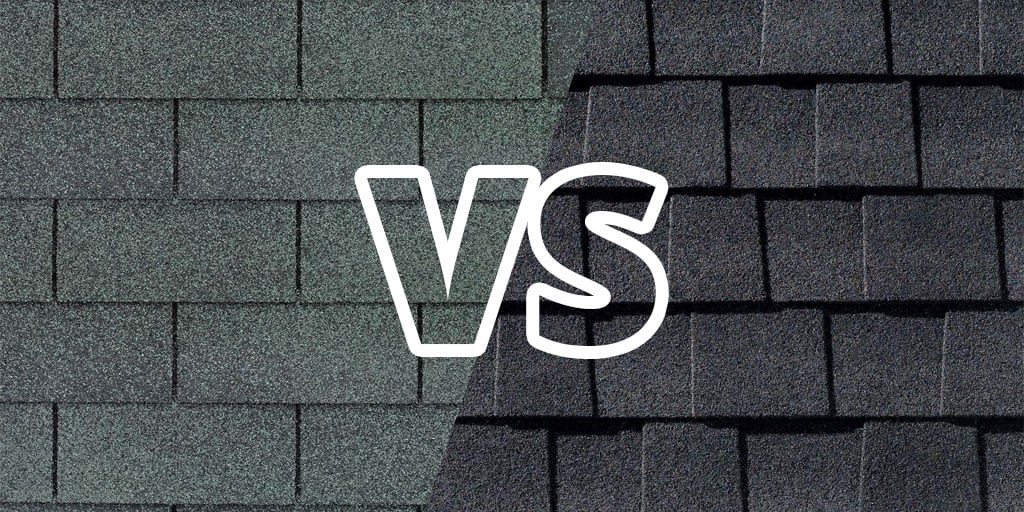Roofing is a critical aspect of any building, and the choice of roofing material can significantly impact the aesthetics, durability, and overall performance of a structure. Among the plethora of roofing options available, asphalt shingles and architectural shingles stand out as popular choices. In this comprehensive comparison, we will delve into the characteristics, advantages, and disadvantages of both asphalt and architectural shingles, helping homeowners and builders make informed decisions.
Asphalt Shingles:
Asphalt shingles have been a staple in the roofing industry for decades, known for their affordability and ease of installation. Composed of a fiberglass or organic mat coated with asphalt and mineral granules, these shingles come in two main types: three-tab shingles and dimensional shingles.
- Cost-Effectiveness: Asphalt shingles are widely recognized for their cost-effectiveness. They are more affordable than many other roofing materials, making them an attractive option for budget-conscious homeowners.
- Installation and Maintenance: The installation process for asphalt shingles is relatively straightforward, and many roofing professionals are well-versed in working with this material. Maintenance is minimal, and repairs are generally easy to carry out.
- Variety of Styles and Colors: Asphalt shingles offer a wide range of styles and colors, providing homeowners with the flexibility to choose a look that complements their architectural style and personal preferences.
- Durability: While asphalt shingles are durable, their lifespan is typically shorter compared to other roofing materials. They may last 20-30 years, depending on factors such as climate and maintenance. Read more about asphalt vs architectural shingles
Architectural Shingles:
Architectural shingles, also known as laminated or dimensional shingles, are a more recent advancement in roofing technology. They are made from multiple layers of asphalt and have a distinctive, textured appearance that mimics the look of wood or slate.
- Aesthetics: One of the primary advantages of architectural shingles is their aesthetic appeal. They provide a three-dimensional look that adds depth and character to a roof, enhancing the overall curb appeal of a home.
- Durability and Longevity: Architectural shingles are generally more durable than traditional asphalt shingles. Their multiple layers and heavier construction contribute to enhanced resistance against wind, hail, and other environmental elements. These shingles often have a longer lifespan, ranging from 30 to 50 years.
- Versatility: These shingles are available in a variety of styles, including slate and cedar shake replicas. This versatility allows homeowners to achieve the desired architectural style without sacrificing the benefits of modern roofing technology.
- Higher Cost: While architectural shingles offer superior durability and aesthetics, they come with a higher upfront cost compared to traditional asphalt shingles. However, many homeowners see this as a worthwhile investment due to the extended lifespan and enhanced visual appeal.
Comparison:
- Cost: Asphalt shingles are more budget-friendly, making them a popular choice for homeowners with financial constraints. On the other hand, architectural shingles require a higher initial investment but offer long-term value.
- Aesthetics: Architectural shingles excel in aesthetics, providing a more textured and visually appealing look. Asphalt shingles, while versatile, may lack the depth and sophistication of architectural shingles.
- Durability: Architectural shingles have a clear advantage in terms of durability. Their multiple layers and advanced composition make them more resistant to weathering, impact, and other environmental factors compared to traditional asphalt shingles.
- Lifespan: Architectural shingles generally have a longer lifespan, potentially lasting 30 to 50 years, whereas asphalt shingles typically last 20 to 30 years.
- Installation: Both types of shingles are relatively easy to install, but contractors with experience in architectural shingles may be required for optimal installation due to their specific design.
Conclusion:
In the asphalt shingles vs. architectural shingles debate, the right choice ultimately depends on individual priorities, budget considerations, and aesthetic preferences. Asphalt shingles remain a popular and economical choice for many homeowners, offering a reliable roofing solution at a lower cost. On the other hand, architectural shingles provide a higher level of durability and aesthetic appeal, making them a preferred option for those willing to invest in a long-lasting and visually striking roofing system. Whatever the choice, understanding the key differences between these two roofing materials is crucial for making informed decisions that align with the specific needs of each home or building. Visit official website onlyroofing.com

